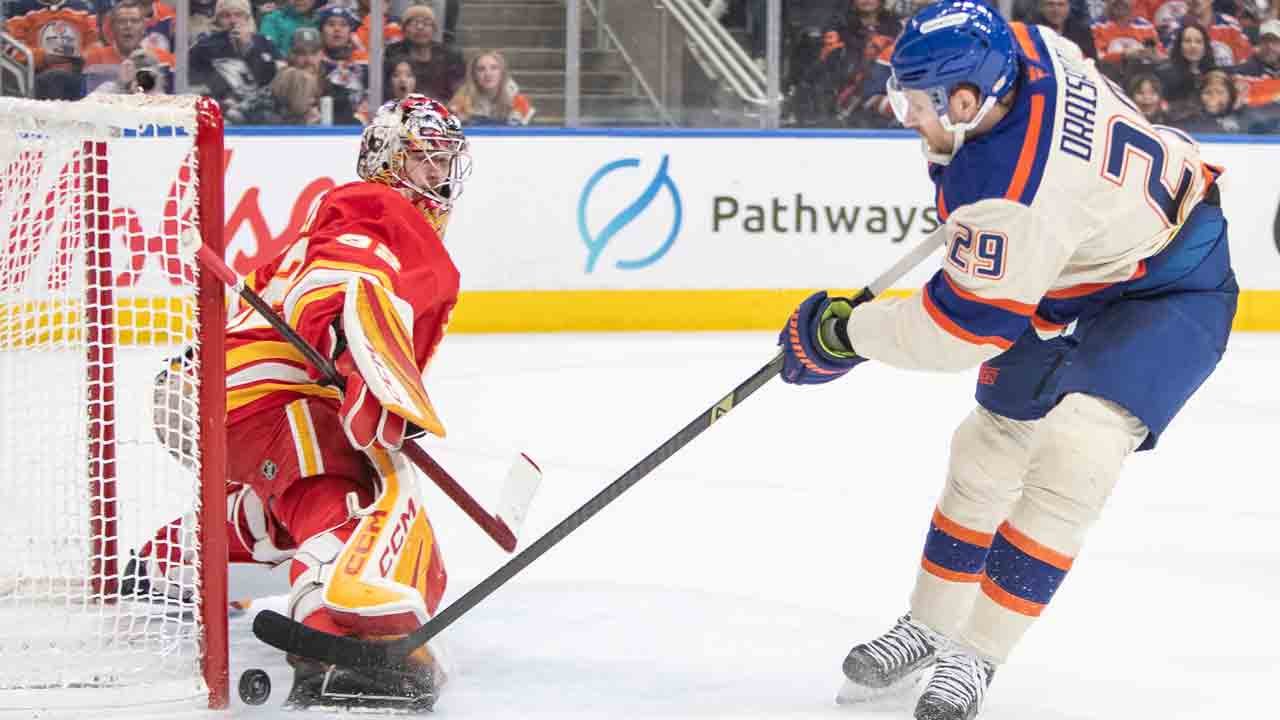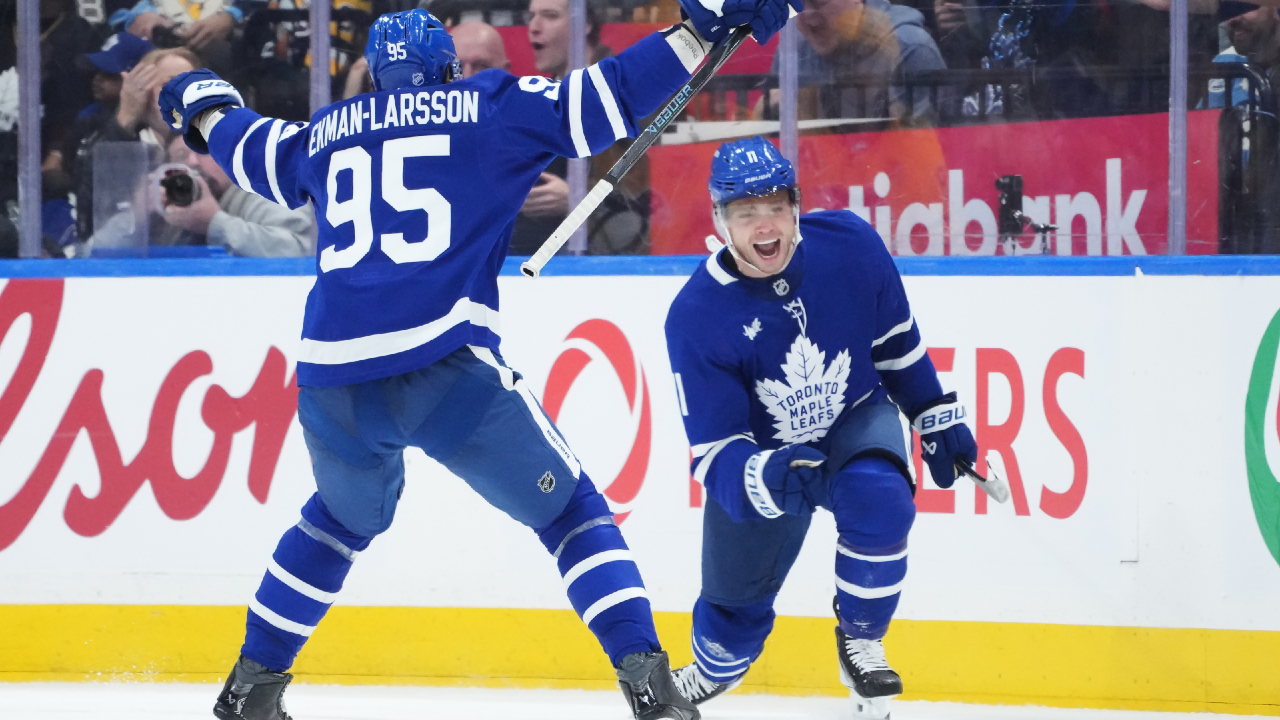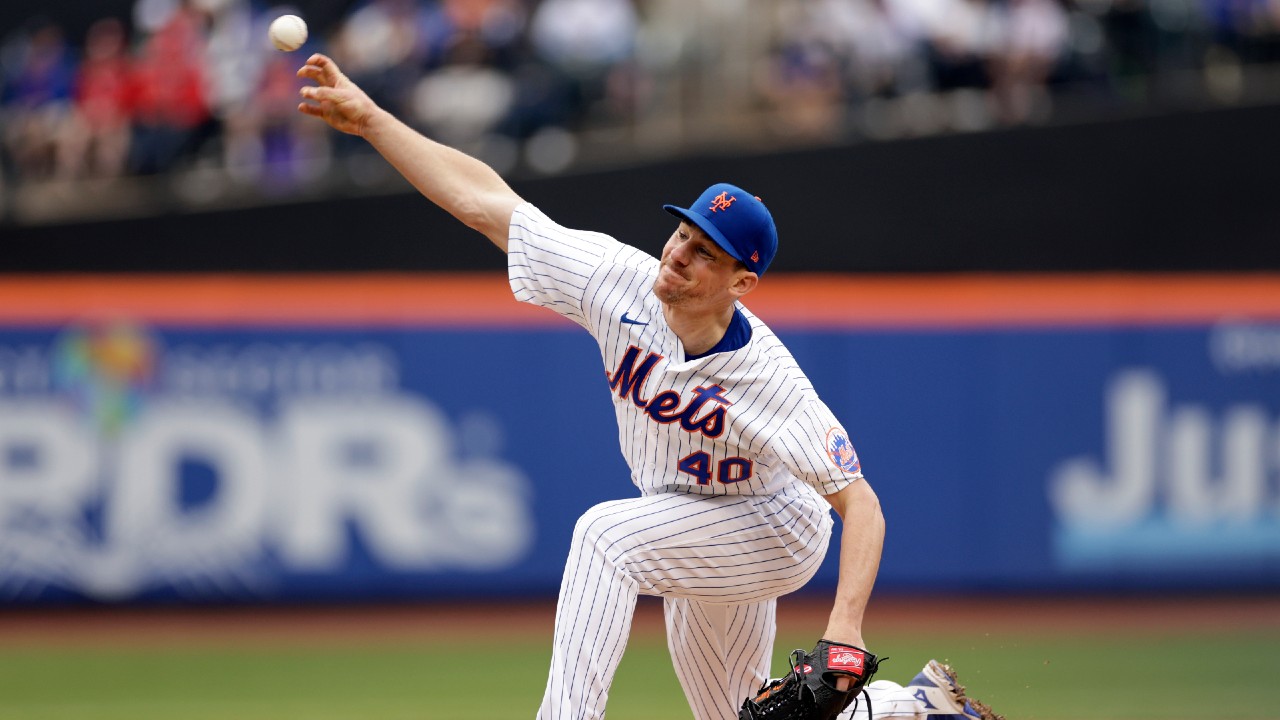
There’s a reason the Toronto Blue Jays exhaust every last opportunity a young, talented pitcher has of starting games before transitioning them to bullpen roles. Why did Jordan Romano spend his age-25 season working to develop a changeup at double-A? Why won’t the organization close the book on the possibility of Nate Pearson making starts? Why was Julian Merryweather stretched out at spring training again and again? Why was Yosver Zulueta’s overpowering stuff still being used in a minor-league rotation last year rather than a major-league bullpen?
Robbie Ray’s why. The Blue Jays acquired the volatile left-hander for next to nothing before he finally realized his obvious potential at 29. Kevin Gausman, too. He was non-tendered at 28 before signing a $110-million contract at 30. Joe Musgrove, a Blue Jays 2011 first round pick, broke out at 28 with his fourth organization. Tyler Anderson just had his first season with an ERA+ above 100 at 32 and signed a three-year, $39-million deal.
And then there’s Chris Bassitt, who the Blue Jays are finalizing a three-year, $63-million free agent contract with this week. A 16th-round pick who sat out his sophomore college season at the University of Akron to focus on academics, Bassitt reached the big-leagues at 25, floundered for two years, had Tommy John surgery, went over 25 months between major-league appearances, spent a brief spell as a swingman, and finally hit his stride during pandemic-shortened 2020 at the age of 31.
Bassitt didn’t even enter that campaign with a guaranteed rotation spot, inheriting one at the end of summer camp when Oakland’s fifth starter, A.J. Puk, went down to a shoulder issue. Not yet fully stretched out, Bassitt threw four shutout innings in his first game of the season, followed it up with consecutive one-run outings, and never looked back, finishing the year with a 2.29 ERA over 11 starts and receiving down-ballot Cy Young votes. He started the second game of Oakland’s wild card series with the Chicago White Sox, the team that drafted him, and the first game of its subsequent ALDS vs. the Houston Astros.
That’s why you never give up on pitchers with the tools to start until you absolutely must. You never know when the light bulb’s going to turn on. You never know when a stubborn sinkerballer with great command yet ordinary stuff will run his head into a wall enough times to finally buy into necessary changes. You never know when a pitcher like Bassitt will unlock everything by revamping his sequencing while upping his cutter and slider usage, relying more on his deep array of secondaries than the sinker he threw over 40 per cent of the time the two seasons prior.
That was, in a nutshell, how Bassitt broke out. He’d long possessed a deep repertoire he could control and command but never fully leveraged it. That changed in 2020, as Bassitt began mixing and matching more evenly, using the varying velocities and action of his six pitches all around the zone to keep batters off balance.
Arm-side sinkers in to righties, glove-side cutters in to lefties. Sweeping sliders sailing over the bats of righties, fading changeups falling under the bats of lefties. The occasional, air-bending, 72-m.p.h. curveball at the knees just in case hitters forgot he had it. A 93-m.p.h. four-seamer that plays up as a two-strike pitch — 28 per cent whiff rate in 2022 — thanks to his delivery (more on that later) and how he disguises it behind his other offerings.
Bassitt’s sinker gets a lot of praise, and for good reason — it had the second-best run value of any sinker league-wide last season. But it isn’t effective because it’s an overwhelming pitch. It actually features less drop (22.5 inches) and velocity (92.8-m.p.h.) than a league-average one. If Bassitt only threw sinkers, as he sometimes did earlier in his career, he’d be a pretty pedestrian pitcher, as he sometimes was earlier in his career.
What makes it so effective now is all the other stuff he throws around it. Tunnelling sliders and cutters off those sinkers on the edges; first-pitch breaking balls dropped in for strikes with sinkers behind them; elevated four-seamers in two-strike counts.
The way Bassitt’s pitches mirror one another helps, too. His sinker and cutter move horizontally in opposite directions. So do his changeup and slider. That gives him multiple weapons to attack with on either side of the plate. Then, when he’s got you looking inside and out, he’ll work up and down with four-seamers and curveballs.

Bassitt’s excellent control and command — his 6.4 per cent walk rate since 2020 ranks 13th among qualified starters — allows him to locate all those pitches along the edges of the strike zone, making him a truly uncomfortable plate appearance. Hitters can’t ever be certain what’s coming next. Only that it will likely be off the heart of the plate, moving at a different speed and in a different direction than whatever Bassitt just threw.
And it all looks weird out of his hand. Among the 116 right-handed starters to throw at least 1,000 pitches last season, Bassitt averaged the 28th lowest vertical release point — an oddity for an athlete who stands 6’5. Bassitt’s right knee nearly scrapes the mound in his delivery, as he drop-and-drives towards the plate, adding another layer of deception to his pitches and giving some — elevated four-seamers in particular — the illusion of rising:
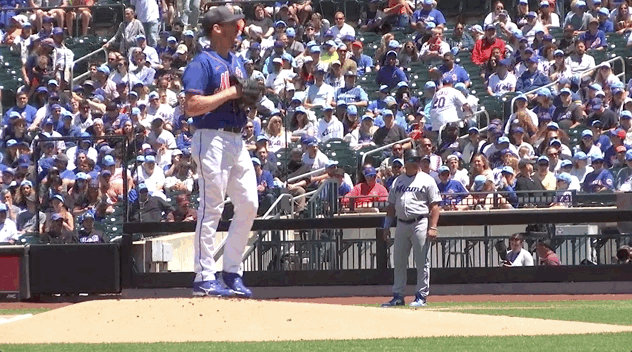
It’s not every day you see a pitcher releasing the ball from a position like this:
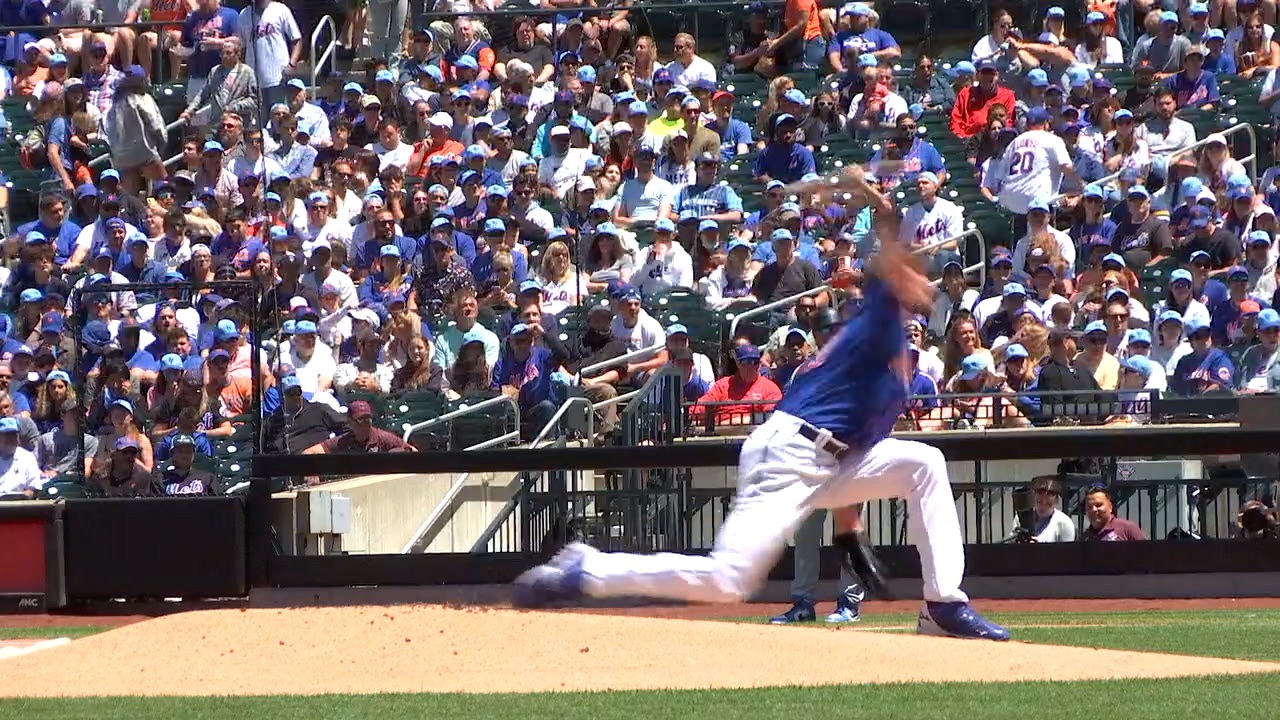
That’s how you succeed at the highest level with relatively underwhelming raw stuff like Bassitt’s — deception, unpredictability, and location. Bassitt started over 60 per cent of his plate appearances with a strike last season and located 44 per cent of his pitches along what Baseball Savant qualifies as the edges of the strike zone — a top-20 rate among starters.
When he’s doing that and effectively varying his sequencing throughout an outing, hitters can’t sit on or eliminate anything from his repertoire in any count. They’re forced to think about six different possibilities as Bassitt charts different paths towards his outs.
Here he is last July going in, away, and up with a sinker, curveball, and four-seamer to leave Manny Machado shaking his head:
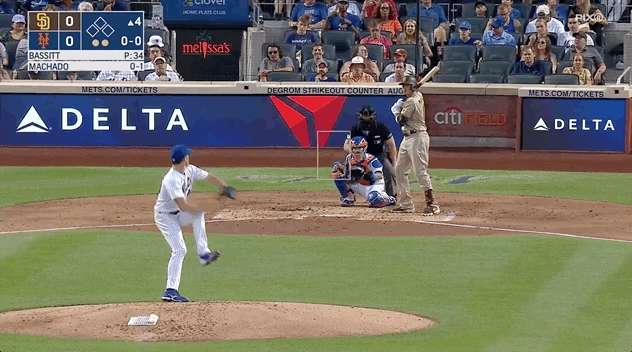
Here’s another fun one from May, when Bassitt goes up, down, and away to flummox Julio Rodriguez with a curveball, sinker, and slider:

Of course, making hitters look foolish like that isn’t really his game. Bassitt’s 23.2 per cent strikeout rate since 2020 is a tick blow MLB average over that span. His whiff rate’s ranked among the league’s 32nd percentile or lower each of those three seasons. While there’s great discrepancy between his various pitches, none of them are overpowering and he’ll typically sit in the low-90’s with his two fastballs. Big-league hitters are quick and reactive enough to reliably make contact against Bassitt’s stuff.
But that’s what he wants. Bassitt uses his command, deception, and unpredictability to generate gobs of weakly-hit balls in play that fielders behind him can convert into outs. All those sinkers and cutters on the edges, all those curveballs and sliders tailing down in the zone, have helped keep his groundball rate (45.3 per cent since 2020) high and his hard-hit rate (33.5) low.
Where does that approach play best? Massive ballparks. And where has Bassitt pitched over the course of his career? Massive ballparks. Oakland Coliseum and Citi Field are annually among MLB’s five least hitter-friendly environments. And Citi Field has recorded the second-lowest average exit velocity of any MLB venue since it opened in 2009.
Rogers Centre? Well, it’s featured the 10th-highest average exit velocity over that span and played as a neutral offensive environment through the last three seasons. It’s not like Bassitt’s going to Coors Field. But he will be testing his approach in a much less favourable environment than the ones he’s accustomed to going forward.
Everyone’s milage with regards to the impact of these park factors will vary. And we’ll leave it to you to decide how much weight to put into the fact Bassitt’s pitched to a 2.68 ERA at home and a 4.26 one on the road since his MLB debut. Home-road splits aren’t everything. But Bassitt’s are dramatic and they’re worth noting over a sample as large as his 136-outing career.

Bassitt undoubtedly also benefitted from playing in front of a strong defensive infield last season. Francisco Lindor ranked second among MLB shortstops with 13 outs above average, while Jeff McNeil ranked seventh among second baseman despite splitting time between that spot and the outfield.
The Blue Jays can cobble together decent enough second base defence between Whit Merrifield, Santiago Espinal, and Cavan Biggio. But pitching with Bo Bichette (-7 OAA in 2022) playing shortstop behind him and teams now restricted in how aggressively they can shift infielders is another downgrade for Bassitt with Toronto.
He’ll at least by reunited with Matt Chapman, who vacuumed up groundballs at third base during Bassitt’s time with Oakland. But Chapman’s entering his walk year while the Blue Jays are committed to Bassitt through 2025. If Chapman leaves in free agency next winter and Bichette doesn’t improve at shortstop, the club will need to take a hard look at its infield in 2024 and beyond if it wants to maximize Bassitt’s abilities.
But that’s a concern for next winter. Between now and then, the Blue Jays will be deploying a durable, proven soft-contact generator in the middle of their rotation, paying $21-million to take part in Bassitt’s late-career breakout. It’s easy to make a bet like that on a pitcher like Bassitt who’s already demonstrated an ability to adapt over time. And, as odd as it is to say of a pitcher about to turn 34, he could continue improving over the life of the deal if Toronto’s pitching development staff has some more adjustments in mind for him.
The nice thing about not relying on velocity to get outs is not having to worry as much about losing it. Biology will one day betray us all, but if it comes for Bassitt’s arm strength over the next three seasons, there’s reason to believe he’ll be able to continue chewing through soft-contact outs with command as reliable, and a repertoire as deep and varied, as his.
Just as there’s a reason the Blue Jays exhaust every last opportunity young, talented pitchers have of starting games before transitioning them to bullpen roles. Bassitt’s walking, drop-and-driving, edges-of-the-zone-attacking proof.





